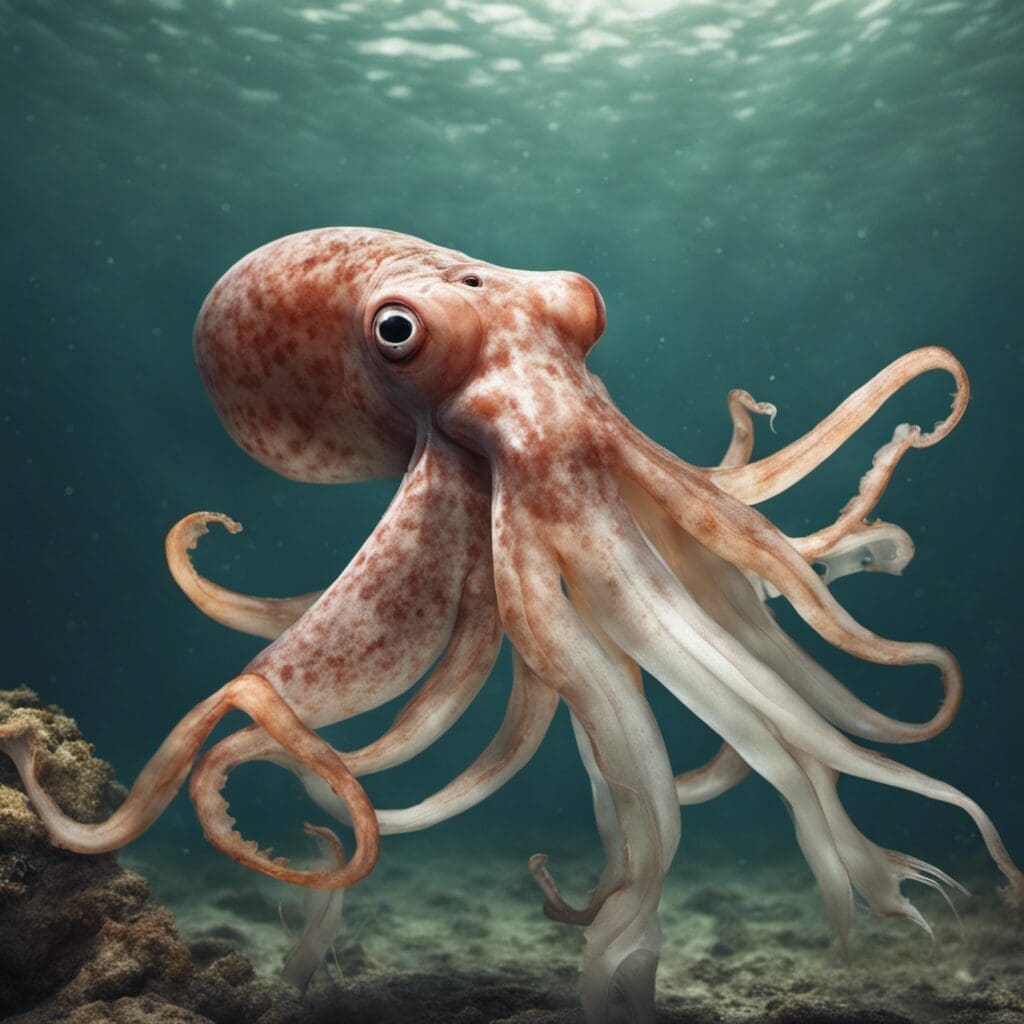Introduction
The Squid is a fast and tenacious member of the family Cephalopoda, which includes species like Octopuses and Cuttlefish. Squid are known for their unique soft-bodied structure, tentacle arrangement, and their abilities in color-changing and ink squirting.
Conservation Status
As a species quite remarkable in its ability to adapt and thrive, Squids are not currently under threat and do not feature on the Conservation Status. However, overfishing still poses a hazard, and efforts are underway to manage fisheries to ensure the health and survival of this prolific species.
Statistics
| Category | Average | Range |
|---|---|---|
| Length | 60 cm | 2 cm – 20 m |
| Weight | 275 kg | 1 g – 275 kg |
| Lifespan | 1-5 years | – |
It’s essential to note that these statistics vary significantly among different Squid species.
Distribution
Squid are found in all the world’s oceans, from the cold depths of the Antarctic and Arctic Oceans to the warm and tropical seas around the equator. They migrate across vast distances, making them an integral part of many marine ecosystems.
Habitats
Squid can be found in diverse marine habitats. They typically live in the open ocean, but some species are found in nearshore waters and even brackish estuaries.
- Water type: Saltwater
- Depth range: Surface – 4500 m deep
- Temperature range: Varies depending on species
When and Where to See
Squid can be seen throughout the year, but they are often more active and visible during their mating season. Specific times depend on their species and regional factors. Squid can usually be spotted at night when they rise closer to the water’s surface to feed.
Best Fishing Locations
Squid can be found worldwide, but here is a list of some of the best locations for Squid fishing:
- Shimizu, Shizuoka, Japan
- Foveaux Strait, New Zealand
- California Central Coast, USA
- The Azores, Portugal
- South-East Queensland, Australia
- Costa Rica
- Puget Sound, Washington, USA
- Norfolk, UK
- Tainan, Taiwan
- Argentine Sea, Argentina
General tip: Look for Squid during the nighttime in the warmer season in open, deep waters.
How to Catch
Squid are best caught using methods like jigging and trolling. Specific lures, like Squid jigs, are designed to attract and hook Squid effectively. The best times for fishing are at night and during their spawning season where the Squid are most abundant and active.
Identification Guide
Squid have a distinctive torpedo-shaped body, large eyes, and a circle of tentacles around their mouths. Their body color can change rapidly due to their unique adaptive camouflage abilities. To differentiate them from similar species, look for the two longest tentacles that Squid have and their ink-squirting defensive mechanism.
Culinary
Squid is a high-protein, low-fat food source known for its firm texture and slightly sweet, nutty flavor. It can be grilled, stewed, stir-fried, stuffed, or served raw in sushi. Since Squid can become rubbery if overcooked, it’s essential to cook it quickly at high heat or slowly at a low temperature.
Nutrition facts (per 100g serving):
Calories: 92
Protein: 15.6g
Carbohydrates: 3.1g
Fat: 1.4g
Cholesterol: 198mg
Additional Information
Squid are carnivorous, feeding on fish and other small marine creatures. They are preyed upon by larger marine animals, such as whales, seals, and large fish. Squids also play a crucial role in various cultures’ folklore and myths, symbolizing mystery, transformation, and the hidden depths of the sea.
References and Further Reading
Both data-based and narrative-focused sources provide an in-depth understanding of this fascinating species.
- Marine Bio: Giant Squid
- National Geographic: Giant Squid

